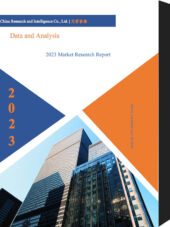Description
Product Overview
Athletic footwear is a commodity of excellent quality. These shoes have unique craftsmanship and exclusivity that attract consumers to these shoes. Athletic footwear refers to shoes designed for athletic events and other outdoor activities. Such footwear is readily available and can be purchased from various distribution channels, such as wholesale, online, or e-commerce.
Market Highlights
Athletic Footwear Market is expected to project a notable CAGR of 5.9% in 2030.
Athletic Footwear Market to surpass USD 124.6 Billion by 2030 from USD 67.30 billion in 2019 in terms of value growing at a CAGR of 5.9% throughout the forecast period, i.e., 2020-30. The market provides a range of shoes with color, style, and price choices to appeal to individual consumers’ desires and buying abilities. The growth of the athletic footwear market has been fueled by sales expansion across online platforms, new product releases, and attractive marketing and promotional strategies adopted by the companies. With players making significant investments in marketing platforms and brand building, the market is highly competitive. This highlights their presence and helps to build their brand image to draw more customers. Consumers are also increasingly realizing the significance of using the appropriate type of shoes for sports activities to prevent muscle injuries, leg injuries, knee pain, hip pain, and back pain. As a result, the demand for athletic shoes is expected to register a sharp rise over the coming years.
Athletic Footwear Market: Segments
Trekking & hiking shoe segment to grow with the highest CAGR during 2020-30
Athletic Footwear Market is segmented by product as aerobic shoes, running shoes, walking shoes, trekking & hiking shoes, and sports shoes. Running Shoe segment is estimated to lead the market with a share of over XX.X% in 2019. Consumers are reluctant to adjust to a rather sedentary lifestyle in the global economy, which has recently alarmed the need to participate in activities such as running and walking that help them manage their wellbeing. This is the major reason for the rising popularity of running shoes among consumers in the industry. The growing desire to preserve health among customers is also correlated with the interest in premium and personalized shoes. Due to their willingness to communicate with their customers, the brands for running shoes operating in the global market compete with other brands through the use of powerful admirable figureheads and an incredibly efficient distribution network. Due to technological developments that have guaranteed more comfort and versatility for hikers, the trekking and hiking shoe segment is expected to display healthy growth during the forecast era.
Female Segment to be the fastest-growing segment with a CAGR during 2020-30
Athletic Footwear Market is segmented by Gender into Male and Female and children. The Male segment accounted for the largest revenue share of XX.X% in 2019. The segment will continue to dominate the athletic footwear market over the forecast period. Women’s footwear is gradually catching up as the popularity of sports continues to grow among women, particularly in previously unexplored markets. In most developed countries, in contrast to developing and underdeveloped countries, the proportion of women athletes representing their respective nations at major sporting competitions is important. However, in developed countries, the situation is steadily shifting, in line with efforts being made by the governments of the respective countries to enable women to engage actively in sports and other fitness-related activities. In developing markets, this is expected to dramatically increase women’s athletic footwear sales.
Athletic Footwear Market: Market Dynamics
Drivers
Changing consumer lifestyle
A significant factor affecting the consumer lifestyle is urbanization. In the coming years, the evolving customer lifestyle is expected to increase the market for athletic footwear. In developing countries, obesity is a significant health concern, with one out of three people being obese. Activities such as yoga, gym, and jogging to fight obesity focus on the metropolitan population. Youngsters are willing to follow a healthier lifestyle and are thus regularly interested in sports and other related events. At the same time, people have begun to understand that sports and exercise practices can help ensure good health and minimize the risk of chronic conditions such as depression, cardiovascular disease, hence, the demand for athletic footwear is higher in these countries. In the coming years, the growing perception of health among consumers is expected to increase this demand further. In addition, e-commerce has streamlined the consumer buying process by making it simpler and more convenient. Compared with developing countries such as India and China, online shopping is more common in developed countries, such as America and Japan. The new retail situation differs from the current scenario owing to the advent of e-commerce, the industry has a tremendous opportunity to make shopping cheaper, easier, and more convenient.
Restrain
Rising availability of counterfeit products
Increased market availability of counterfeit Footwear, unpredictable economic conditions in developed and developing countries around the world, and currency depreciation are some of the key factors that may limit global market development. The previous economic recession had a negative impact on worldwide Athletic Footwear sales. Market limiting variables may be currency volatility and fewer brand outlets in developing regions. In the Athletic Footwear sector, raw materials also play a critical role and their prices have risen dramatically in the past few years.
Athletic Footwear Market: Key Players
Adidas Group
Company Overview, Business Strategy, Key Product Offerings, Financial Performance, Key Performance Indicators, Risk Analysis, Recent Development, Regional Presence, and SWOT Analysis.
Nike, Inc.
Under Armour Inc.
Puma SE
SKECHERS USA
ASICS Corporation
Wolverine World Wide Inc.
VF Corporation
New Balance
FILA
Athletic Footwear Market: Regions
Athletic Footwear Market is segmented based on regional analysis into five major regions. These include North America, Latin America, Europe, Asia Pacific, and Middle East, and Africa.
Athletic Footwear Market in North America led the market with a lion share of more than 32.6% in 2019 and the region is projected to continue to lead the market over the forecast period. The U.S. is the main source of revenue for the regional market, which can be due to a high degree of citizens’ passion for sports, health, and adventure activities, such as aerobics, hiking, training, and trail running. In addition, over the projected period, led by Latin America, APAC is expected to see the highest growth rate. It is projected that rising levels of disposable income and increasing penetration of e-commerce play a major role in driving Asia Pacific athletic footwear demand. Increasing enthusiasm for participating in various sports activities, including the Asian Games, the ICC Cricket World Cup, and the ACC Asia Cup is supplementing the development of the country.
Competitive Landscape:
The Athletic Footwear market, which is highly competitive, consists of several major players such as Adidas AG; ASICS Corporation; Fila Inc.; Under Armour, Inc. hold a substantial market share in the Athletic Footwear market. Other players analyzed in this report are Lotto Sport Italia S.p.A.; New Balance Athletics, Inc.; Vans; Nike, Inc.; Puma SE; Reebok International; Saucony; Skechers USA, Inc.; and Woodland Worldwide among others.
Athletic Footwear Market is further segmented by region into:
North America Market Size, Share, Trends, Opportunities, Y-o-Y Growth, CAGR – United States and Canada
Latin America Market Size, Share, Trends, Opportunities, Y-o-Y Growth, CAGR – Mexico, Argentina, Brazil, and Rest of Latin America
Europe Market Size, Share, Trends, Opportunities, Y-o-Y Growth, CAGR – United Kingdom, France, Germany, Italy, Spain, Belgium, Hungary, Luxembourg, Netherlands, Poland, NORDIC, Russia, Turkey, and Rest of Europe
APAC Market Size, Share, Trends, Opportunities, Y-o-Y Growth, CAGR – India, China, South Korea, Japan, Malaysia, Indonesia, New Zealand, Australia, and Rest of APAC
MENA Market Size, Share, Trends, Opportunities, Y-o-Y Growth, CAGR – North Africa, Israel, GCC, South Africa, and Rest of MENA
Athletic Footwear Market report also contains analysis on:
Athletic Footwear Market Segments:
By Product:
Aerobic Shoes
Running Shoes
Walking Shoes
Trekking & Hiking Shoes
Sports Shoes
By Gender:
Male
Female
Children
By Mode of Sale:
Brick & Mortar
E-commerce
Athletic Footwear Market Dynamics
Athletic Footwear Market Size
Supply & Demand
Current Trends/Issues/Challenges
Competition & Companies Involved in the Market
Value Chain of the Market
Market Drivers and Restraints
FAQs on Athletic Footwear Market
Which segment is anticipated to hold the largest market share?
At what CAGR is the market anticipated to grow between 2020 and 2030?
Who are the key players in the Athletic Footwear Market?
What could be the challenging factors in the growth of the Athletic Footwear Market?
What are the growth drivers for the Athletic Footwear Market?




Reviews
There are no reviews yet.